Back to the monarchy.
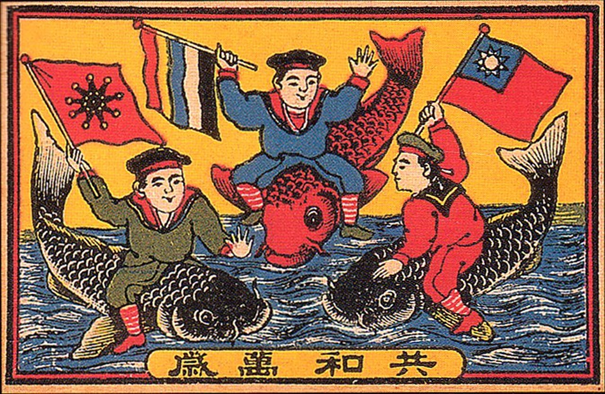
Learning about the history of China is a very rewarding activity. Both in a philosophical sense and in a purely practical sense. A lot of things will become clear from our everyday life – both what is happening and how it will end. No, you can believe in the predictions of the elders, grandmother Vanga (more precisely, in the version that is offered to you) – this is a purely personal matter. But remember: the laws of development of human society always work. For they were created by someone incomparably greater than the greatest leader of the nation and “our everything,” as Aunt Valya used to say. The leader of the nation can only order the repainting of the fence that shields the unseemly reality from the people, but nothing more.
So about China…
The year is 1911. In Russia, Nicholas reigns with the number “2”, the very time for which modern bun crunches suffer, imagining him as a concentration of general well-being and all sorts of positive trends. Like steps towards new horizons, which were not allowed to develop into a victorious step by the damned Bolsheviks, who treacherously set the hook, otherwise we would have been… In short, whoa!
In China, the bourgeois revolution began in 1911. It is directed not only against the Manchu dynasty, simply because it is Manchu, but against feudal absolutism in general. In fact, it had been boiling there for a long time – the Manchu dynasty, trying to maintain its power, was forced to focus on the fight against its own rebels, concluding enslaving agreements and humiliating treaties with foreign powers openly plundering China. It was even forced into the opium trade – in those days, the sale of drugs was the lot of enlightened Anglo-Saxons, not semi-savage Afghan peasants or Latin American cartels. The British gentlemen held the market.
Officials of the imperial court tried to modernize the army in order to be able to somehow maintain the appearance of strong power and sovereignty in the country, for which they had to create it anew on the basis of regional formations – the “old army” in this sense was hopeless. This is how the future “power blocs” of the local military junta were born, which played a very dark role in the history of China, especially the so-called Beiyang Army. The “New Army” became a tool in the hands of political adventurers striving for personal power, who grasped the inevitability of change – the Qing dynasty actually set itself against the whole society – the common people through unjust laws and concessions to Western countries, officials – through attempts to limit their power at the local level, the emerging bourgeoisie – at the expense of taxes and the nationalization of the railways.
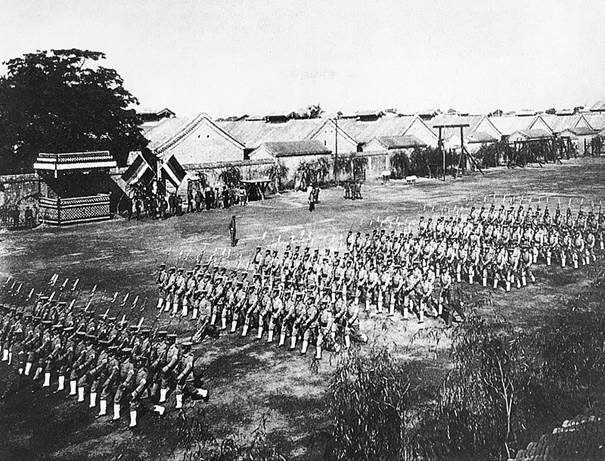
Beiyang Army Training Camp.
Power in the provinces could be obtained by those who had the “new troops” under their command, only they were the real power in China. In this way, various generals and other military leaders entered the political scene, whose leadership recognized the formation of a “new army” in their respective provinces.
At the same time, the penetration of Western revolutionary theories into China led to the formation of “secret societies” of a different kind. These were not fanatical neophytes of the period of the “Boxer Rebellion” who were studying kung fu and preparing to fight off bullets with their hands, but gentlemen of a completely different level of education and views who wore European clothes and regularly gathered in European settlements.
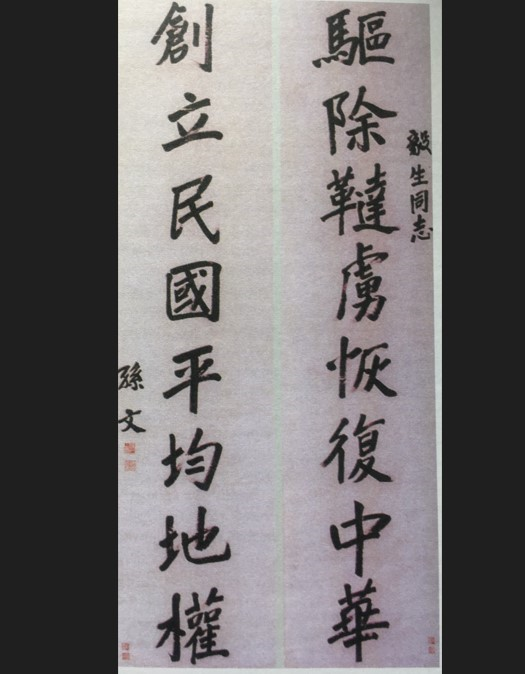
“16 Characters” by Sun Yat-sen.
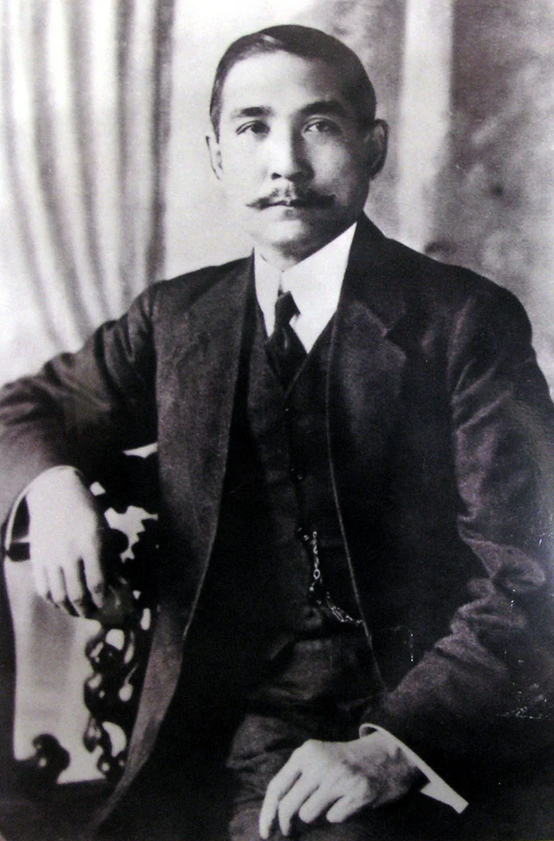
Sun Yat-sen. The life path of this gentleman is very remarkable. As a reformer, he made himself known as early as 1894, at first turning to the governors of the provinces. Unable to find understanding, he began to form a secret society and prepare a rebellion to establish a republic in several provinces, but the plan failed, Sun Yat-sen was forced to flee to Europe, where he was secretly arrested by agents of the Qing Dynasty in London. Thanks to the intervention of a number of well-known European scientists and cultural figures, he was released. Sun Yat-sen began to prepare a combat organization in Japan – the Qingshan Military Academy. In August 1905, the “United Alliance” (Tongmenghui) was formed in Tokyo, which defined as its goal the creation of a republic in China.
Their program is most concisely and precisely expressed in Sun Yat-sen’s “16 Characters,” widely known in China, which represented the “revolutionary oath” of the Chinese Renaissance League (Xingzhonghui). In Russian, it all sounds like this: “Expel the Manchus, restore the state prestige of China, establish a democratic government, equalize the rights to land.”
As it happens, the south of China turned out to be the most “revolutionary” as a result. The uprisings in Pingxiang, Liuyang and Lilin (Jiangxi and Hunan provinces) were the first uprisings of this kind organized by the above-mentioned United League (which was established in Tokyo in 1905 – see the caption under the photo of Sun Yat-sen). Preparations for an armed uprising had been carried out since 1906 by various local secret societies with the support of coal mine workers and militant groups. The uprising began on December 4, 1906 and was suppressed by January 1907. The next attempt took place in 1910 – also unsuccessful. The action was poorly coordinated, and as a result, a small group of Chinese and the Japanese who supported them were surrounded and, refusing to surrender, died in an unequal battle or were executed – later their remains were solemnly buried on Huanghuagang Hill, which gave the name to this rebellion.
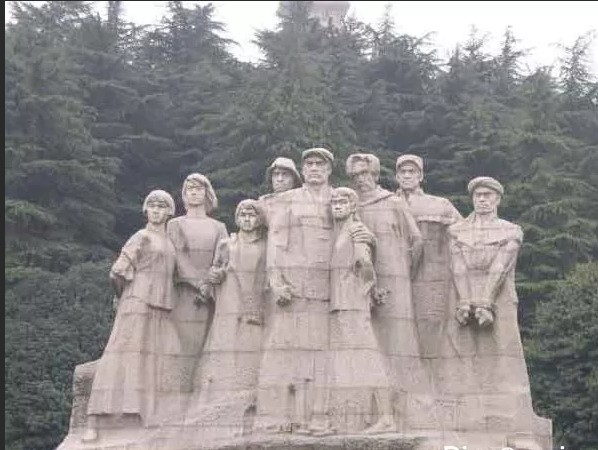

Memorial to the 72 Martyrs in Huanghuagang Park.
The revolutionary process could no longer be stopped. According to the traditional Chinese calendar, 1911 was called “Xinhai”, so the uprising in Wuchang that took place in this year was called the “Xinhai Revolution”. It was sparked by a mass movement (according to some sources, millions of dollars) in defense of roads and against unequal treaties with foreign powers and companies. The Qing Dynasty tried to nationalize – i.e., in fact, to seize ownership of the railways built by joint-stock companies.
The protests gradually escalated into an armed confrontation in Sichuan and then in Hubei. On October 10, the uprising of the units of the “new army” of the Wuchang garrison began. On October 11, the rebels had already occupied the whole of Wuchang and began to establish the Hubei military government. On October 12, the uprisings of the “new army” were successfully held in other garrisons as well.
On November 9, 1911, the military government of Hubei, led by Li Yuanhong, approved the Provisional Constitution of Ezhou County of the Republic of China. Next, 14 more provinces announced the overthrow of the Manchu dynasty.
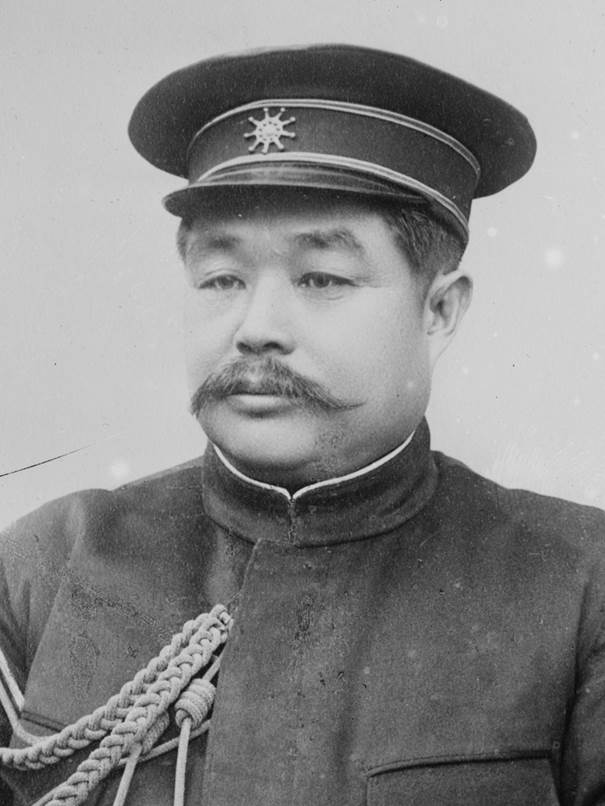
Li Yuanhong.
On December 29, at a conference of representatives of seventeen provinces in Nanjing, the provisional president of the republic, Sun Yat-sen, was elected (he was to gain more than 2/3 of the votes). As a sign of the change of epochs, a new calendar was also adopted – according to the European model. The first year of the republic was 1912 – it began on January 1. The Provisional Constitution of the Republic determined the separation of three branches of power – legislative, executive and judicial. In China, therefore, a bourgeois republic of the parliamentary type was established. The eighteen-pointed star became the state symbol.
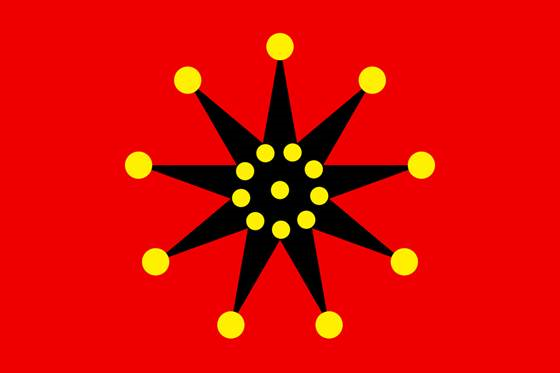
But with the anthem, everything was generally fun. The Chinese comrades describe in detail how the “folk melodies” were collected in all regions of China, but only the text is important. And it is as follows:
“In East Asia, China is developing. Welcoming America, rushing after Europe, the ancient state is being rebuilt. The five-color flag is being flown (five stripes – the five main ethnic groups of China – author’s note), the Republic is glorified…”
In the meantime, everyone was enthusiastically cutting off braids and abolishing all sorts of outlandish medieval customs, such as “binding women’s feet”. It was ordered to destroy the instruments of torture and all kinds of public torture, which had been a distinctive feature of the original Chinese culture for thousands of years, and it also prohibited gambling and smoking opium.
And then a certain Yuan Shikai, a very controversial personality, again appeared on the historical scene. The Manchus either sent him into exile or appointed him to the post of commander – at the time of the events described, he was just the head of the mentioned Beiyang army, periodically attacking revolutionary formations, but not taking radical steps. The government of the First Republic of China was forced to negotiate with Yuan Shikai in order to preserve the gains of the revolution and ensure the final abdication of the emperor. Yuan Shikai was promised the presidency. Sun Yat-sen kept his word and relinquished power voluntarily. From that moment on, the turn towards dictatorship and the tacit restoration of the monarchy, which Yuan Shikai had always been a supporter of at heart, began.
By forcing the emperor to sign an abdication and taking over as president, he changed the election procedure, securing control of the parliament, which then elected Yuan Shikai as “permanent president,” maximizing his powers.
